Introduction: The New Era of AI Diagnosis in Healthcare
In recent years, the integration of artificial intelligence (AI) into medicine has redefined possibilities across diagnostic landscapes. Today, the powerful synergy between technology and human expertise is nowhere more evident than in the evolution of AI diagnosis in healthcare. This transformative development has revolutionized disease detection, offering healthcare providers unparalleled precision, speed, and adaptability. As medical research advances, the convergence of AI diagnostic tools and clinical practice is rewriting the standards for early intervention, personalized treatment, and predictive analytics. This article explores the profound impact, current applications, challenges, and future directions of AI in healthcare diagnostics, drawing attention to the groundbreaking ways artificial intelligence is shaping the future of medicine.
You may also like: Revolutionizing Healthcare: How AI in Medicine Is Enhancing Diagnosis, Treatment, and Patient Outcomes
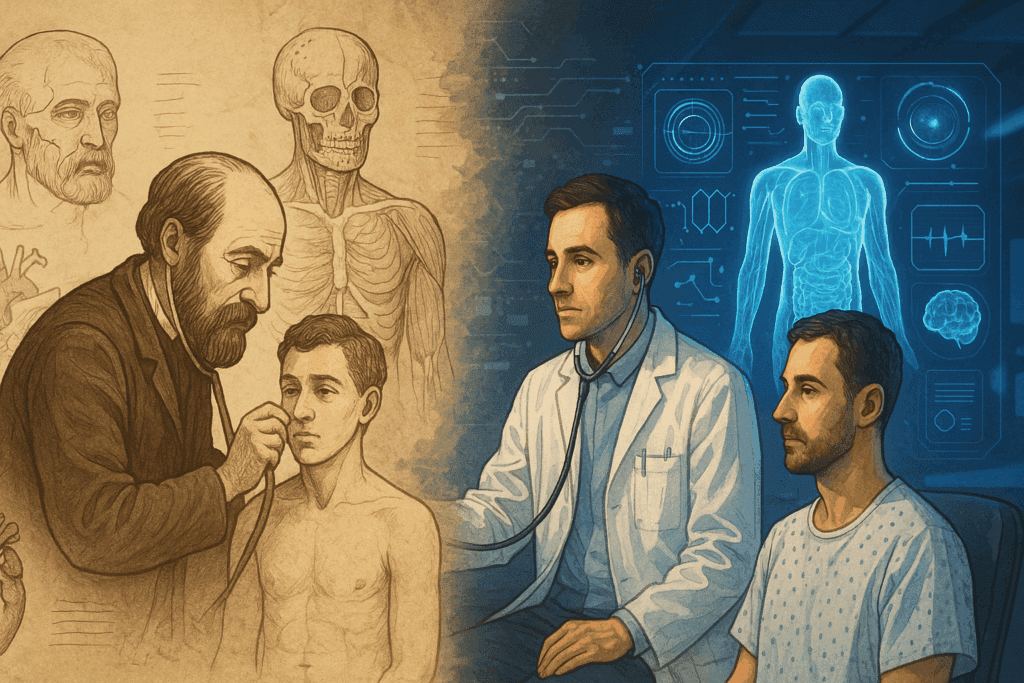
The Historical Evolution of Diagnostic Methods
For centuries, disease diagnosis relied primarily on human observation, clinical experience, and rudimentary laboratory tests. Physicians interpreted physical signs, patient histories, and basic imaging results to formulate diagnoses, a practice prone to variability and human error. The discovery of X-rays in the late 19th century marked a pivotal shift, enabling physicians to visualize internal structures non-invasively. Subsequent decades saw the emergence of increasingly sophisticated modalities, such as MRI and CT scans, blood biomarkers, and genetic testing. Yet, despite these advances, diagnostics remained limited by human interpretive capabilities. With the advent of computers, the concept of integrating technology into diagnostic practices began to take shape, culminating in the powerful, data-driven applications of artificial intelligence diagnosis medical systems seen today. AI diagnostics bridge historical methods with future promise, offering an evolution rather than a replacement of medical wisdom.
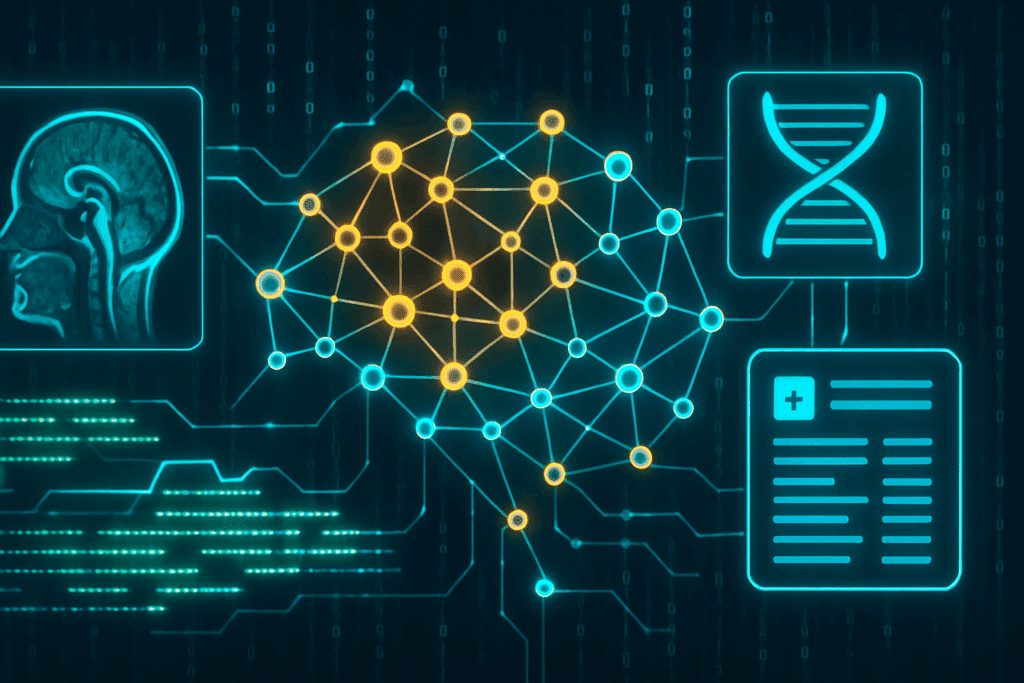
Understanding the Fundamentals of AI in Medical Diagnostics
Artificial intelligence in medical diagnostics involves the application of machine learning (ML) algorithms, natural language processing (NLP), and deep learning models to interpret complex medical data. These systems are trained on vast datasets encompassing medical images, electronic health records (EHRs), genomic sequences, and clinical notes. By identifying patterns, anomalies, and correlations often imperceptible to human clinicians, AI enhances diagnostic accuracy and efficiency. AI disease diagnosis systems can “learn” from new information, continuously refining their predictive capabilities. At the heart of this evolution are artificial intelligence diagnostic tools, such as image recognition software for radiology, predictive analytics for oncology, and decision-support systems in pathology. This sophisticated convergence of computational power and medical science heralds a new era of patient-centered care, characterized by rapid, accurate, and individualized diagnostics.
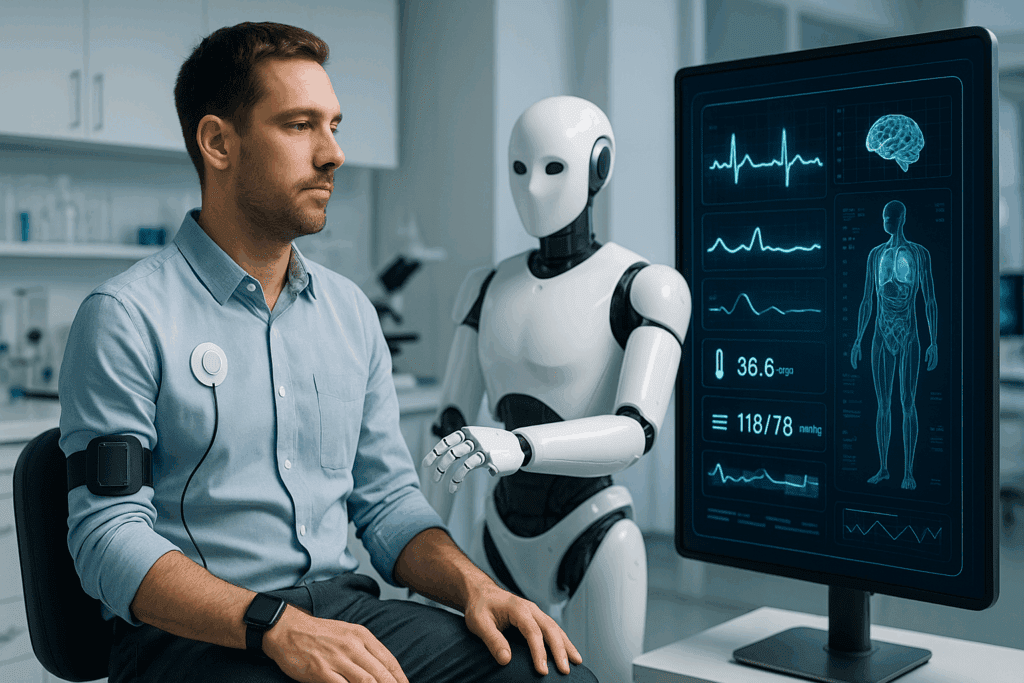
Breakthrough Innovations: Pioneering AI Diagnostic Tools in Healthcare
The development of artificial intelligence diagnostic tools represents one of the most exciting frontiers in modern medicine. In radiology, AI algorithms now analyze imaging studies faster and, in some cases, more accurately than human radiologists. Systems like Google’s DeepMind have demonstrated remarkable proficiency in identifying eye diseases, breast cancer, and neurological disorders. Meanwhile, in pathology, AI-powered platforms can scan and evaluate tissue samples for malignancies with unprecedented precision. Another significant breakthrough is AI for medical diagnosis through wearable technologies. Devices embedded with diagnostic AI uses continuously monitor physiological parameters, offering early warnings for conditions such as atrial fibrillation, sleep apnea, and hypertension. These examples underline the growing utility of AI patient diagnosis tools, which promise to democratize healthcare access, particularly in under-resourced settings.
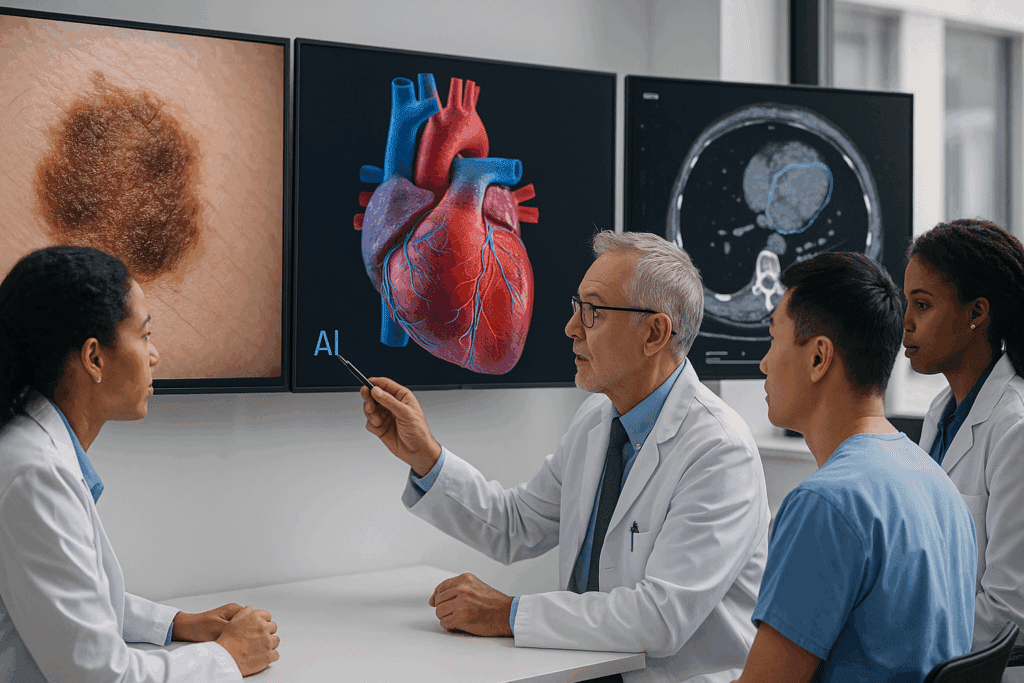
Clinical Applications and Success Stories: AI Diagnosis in Healthcare
Clinical deployment of AI diagnosis in healthcare is already yielding tangible benefits. In dermatology, AI applications can accurately differentiate between benign and malignant skin lesions based on dermoscopic images, aiding early detection of melanoma. Cardiology has embraced AI in healthcare diagnostics to analyze electrocardiograms (ECGs) and predict heart failure risks, often catching subtle patterns that elude even seasoned cardiologists. Oncology is another fertile ground, where AI-driven systems assist in early lung nodule detection, genetic mutation identification, and personalized treatment planning. Notably, during the COVID-19 pandemic, AI diagnostics were instrumental in identifying characteristic lung patterns on CT scans and predicting patient outcomes based on clinical data. Each success story illustrates the growing reliance on AI diagnostic tools to enhance medical decision-making, optimize resource allocation, and ultimately improve patient outcomes.
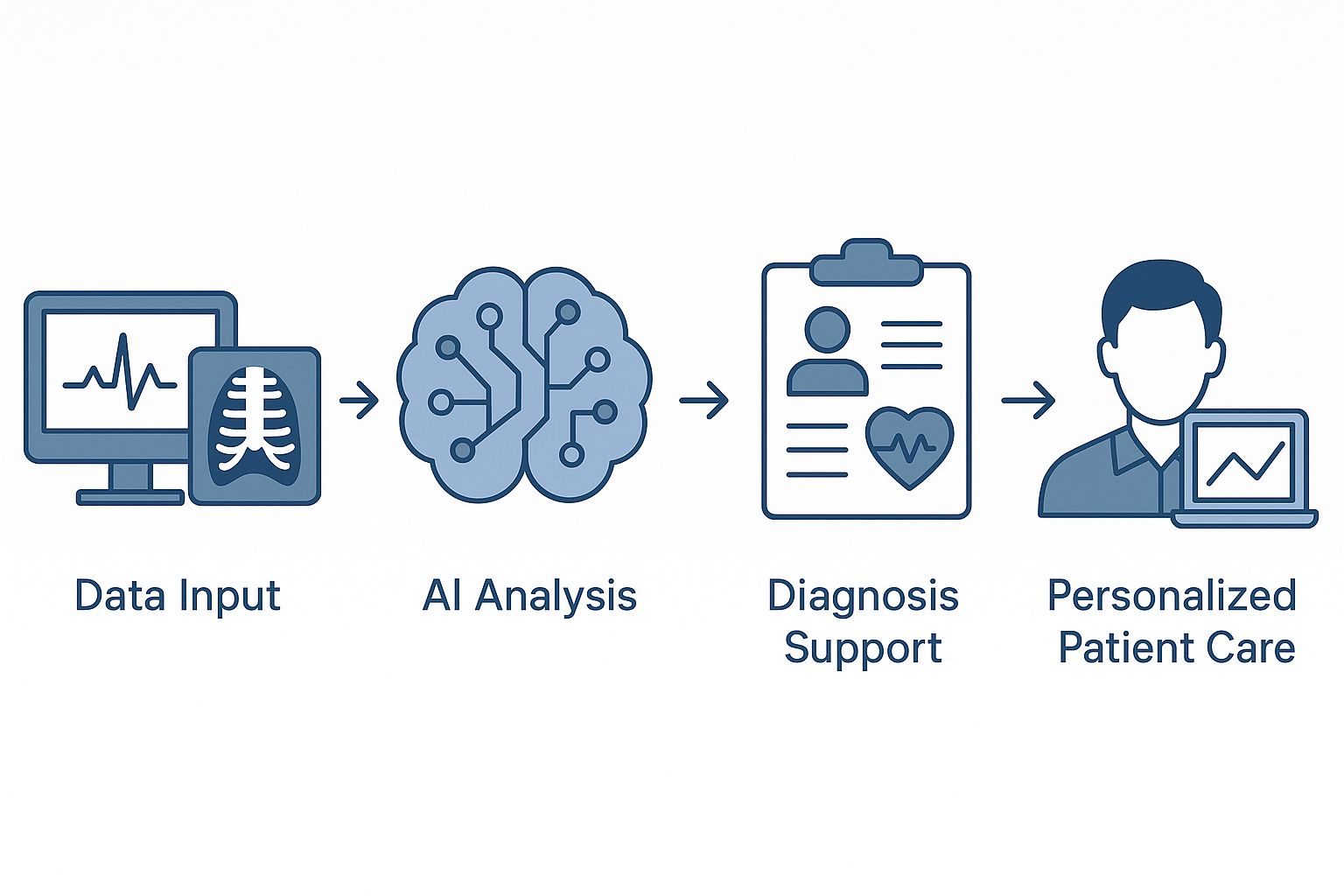
Frequently Asked Questions (FAQ) on AI Diagnosis in Healthcare
1. What Are Some Surprising Benefits of AI Diagnosis in Healthcare Beyond Speed and Accuracy?
While speed and accuracy are often highlighted, AI diagnosis in healthcare also brings subtler advantages. One lesser-known benefit is the improvement in diagnostic consistency across diverse healthcare settings. AI systems standardize diagnostic approaches, reducing variability caused by subjective human interpretation. Additionally, AI diagnostics facilitate enhanced interdisciplinary collaboration by integrating data from multiple specialties seamlessly. Hospitals utilizing AI for medical diagnosis also report higher levels of clinician satisfaction due to reduced diagnostic burden and cognitive fatigue.
2. How Does AI Diagnosis in Healthcare Affect Patient Trust?
Patient trust is pivotal for the successful implementation of AI diagnosis in healthcare. Many patients initially feel apprehensive about machines playing a role in their care; however, transparent communication greatly mitigates these concerns. When healthcare providers explain how artificial intelligence diagnostic tools function and how AI supports, rather than replaces, clinical judgment, patient acceptance increases. Real-world examples where AI diagnostics have caught life-threatening conditions early also bolster confidence. Hospitals that incorporate patient education programs regarding AI technologies find stronger trust bonds and higher satisfaction scores.
3. What Emerging Technologies Are Enhancing AI Diagnostics?
Emerging technologies like quantum computing and federated learning are poised to propel AI diagnostics into new realms. Quantum computing promises to exponentially increase the speed at which AI models process vast datasets, thus refining ai disease diagnosis capabilities. Federated learning allows AI diagnostic tools to train on decentralized data while maintaining strict patient privacy, an essential step for scaling AI in healthcare diagnostics. Moreover, augmented reality (AR) applications combined with artificial intelligence diagnostic tools are enabling real-time, three-dimensional visualization of diagnostic data. These cutting-edge innovations promise a future where AI diagnostics are even more integrated and dynamic.
4. How Are AI Diagnostic Tools Impacting Rural and Underserved Areas?
AI diagnostic tools have become a powerful equalizer for healthcare access disparities. In many rural and underserved regions, a shortage of specialists poses significant diagnostic challenges. Mobile AI platforms equipped with artificial intelligence diagnosis medical capabilities enable healthcare workers to capture images, run analyses, and receive instant feedback even in remote locations. This approach not only accelerates diagnosis but also empowers local providers with decision-support tools that were previously inaccessible. As 5G networks expand, the reach and effectiveness of AI patient diagnosis in remote environments are expected to grow exponentially.
5. What Role Does AI Diagnosis Play in Preventive Healthcare?
Preventive healthcare is experiencing a revolution thanks to ai in medical diagnostics. Predictive algorithms now analyze patient data for subtle biomarkers indicating disease risk long before symptoms emerge. This enables interventions like lifestyle changes, medications, or monitoring plans tailored to an individual’s specific risk profile. AI for medical diagnosis also assists in optimizing population health initiatives, identifying at-risk demographics before widespread disease outbreaks occur. In essence, diagnostic AI uses extend beyond acute illness management to fostering long-term health and wellness.
6. Can AI Diagnostics Personalize Treatments Beyond Just Diagnosis?
Absolutely, AI diagnostics are increasingly merging diagnosis with personalized treatment planning. Beyond simply identifying conditions, modern artificial intelligence diagnostic tools assess disease severity, predict treatment responses, and recommend individualized therapy options. In oncology, for instance, AI systems analyze tumor genetics and imaging to propose targeted therapies tailored to a patient’s unique cancer profile. This marriage of ai diagnosis and treatment planning marks a new frontier where precision medicine becomes the norm rather than the exception. The integration of AI in healthcare diagnostics thus shifts from being purely reactive to deeply personalized and proactive.
7. What Are the Psychological Impacts on Clinicians Using AI Diagnostics?
The psychological impacts of AI diagnostics on clinicians are complex and multifaceted. On one hand, diagnostic AI uses relieve physicians from repetitive, high-stress tasks, reducing burnout and decision fatigue. On the other hand, some clinicians experience “automation anxiety,” fearing that AI could erode their professional autonomy or status. Institutions that emphasize AI as a supportive collaborator, rather than a replacement, report higher clinician morale. Moreover, involving healthcare providers in the development and refinement of AI diagnostic tools fosters ownership, trust, and a sense of partnership. Ultimately, framing AI as a cognitive extender enhances the psychological wellbeing of medical teams.
8. How Do AI Diagnostics Integrate with Electronic Health Records (EHRs)?
Integration between AI diagnostics and EHRs is becoming increasingly seamless and transformative. AI for medical diagnosis systems now pull real-time data from EHRs, enabling dynamic risk scoring, clinical decision support, and personalized alerts within physicians’ daily workflows. This reduces the need for manual data entry and allows clinicians to focus on nuanced patient interactions. However, successful integration requires interoperability standards and careful interface design to avoid information overload. When implemented effectively, ai in healthcare diagnostics enhances the utility of EHRs, transforming them from static records into intelligent, proactive health management platforms.
9. How Are Global Healthcare Systems Embracing AI Diagnosis in Healthcare?
Global healthcare systems are embracing AI diagnosis in healthcare at varying paces, reflecting regional priorities, resources, and regulatory landscapes. In countries like the United States and the United Kingdom, AI diagnostics are heavily integrated into imaging and pathology workflows, often under rigorous regulatory oversight. Emerging economies are adopting mobile ai diagnostic tools to bridge healthcare gaps, particularly in rural areas. Meanwhile, nations such as Japan and South Korea are investing in AI-driven preventive care initiatives to address aging populations. Across all regions, partnerships between governments, tech companies, and medical institutions are accelerating the safe and effective deployment of AI in medical diagnostics.
10. What Is the Future Outlook for AI Diagnosis in Healthcare Over the Next Decade?
The future outlook for AI diagnosis in healthcare is incredibly promising yet filled with important responsibilities. Over the next decade, we can expect AI patient diagnosis to become even more integrated into everyday clinical workflows, with systems adapting to individual clinician preferences and patient needs. Advances in explainable AI will help demystify “black box” models, increasing transparency and trust. Additionally, AI-driven diagnostics will increasingly incorporate multi-omics data (genomics, proteomics, metabolomics) to provide even deeper, more holistic insights into health and disease. Ethical governance, continual clinician education, and a commitment to patient-centered care will be critical to ensuring that the next generation of ai diagnostics enhances healthcare equitably and responsibly.
Conclusion: Embracing the Future of AI Diagnosis in Healthcare
The remarkable strides in AI diagnosis in healthcare underscore a transformative shift in the way we detect, understand, and manage disease. From artificial intelligence diagnostic tools that outperform human experts in image analysis to AI patient diagnosis platforms that enable personalized medicine, the future of diagnostics is both exciting and profound. While challenges remain—including ethical considerations, data privacy concerns, and the need for rigorous regulatory oversight—the potential benefits far outweigh the risks. As we move forward, it is crucial that the integration of AI diagnostics remains patient-centered, ethically sound, and scientifically validated. By embracing these principles, the medical community can harness the full potential of AI to usher in a new era of healthcare, characterized by earlier detection, more accurate diagnoses, and ultimately, better patient outcomes. In doing so, we will not only transform disease detection but also redefine what is possible in the realm of modern medicine.
Further Reading
How Artificial Intelligence is Disrupting Medicine and What it Means for Physicians
How AI Is Improving Diagnostics, Decision-Making and Care
AI Chatbots Can Diagnose Medical Conditions at Home. How Good Are They?


